Mastering Ad Copy
In the intricate landscape of digital marketing, where every click counts, compelling ad copy is all about crafting words that drive action while keeping things concise. This content serves as the gateway to potential customers, influencing their decision to engage with your brand.
Amidst the vast sea of data provided by platforms like Google, deciphering the formula for impactful ad copy remains elusive. Today, we delve into the do’s and don’ts of ad copywriting, empowering marketers to navigate this essential aspect of paid search campaigns with finesse.
Understanding Ad Copy
At its core, ad copy encapsulates the essence of a clickable advertisement. Positioned prominently within search engine results, it serves as a succinct portrayal of the advertised offering. Comprising the second and third lines of an ad, sandwiched between the title and display URL, ad copy wields immense power in driving traffic and conversions.
Ad Copy Don’ts
Avoid Keyword Stuffing
In the bygone era of digital marketing, stuffing ad copy with keywords was hailed as the holy grail of search success. However, evolving user preferences demand a more nuanced approach. Modern consumers gravitate towards content that addresses their needs and pain points rather than bombarding them with keyword-laden rhetoric. Ad copy must strike a delicate balance, seamlessly integrating keywords into meaningful narratives that offer tangible solutions.
Steer Clear of Focusing on the Wrong Problem
Understanding the underlying motivations driving user searches is pivotal to crafting resonant ad copy. Businesses often fall into the trap of misidentifying their target audience’s needs and aspirations. Instead of fixating on generic pain points, successful ad copy zeroes in on specific solutions, positioning the advertised offering as the quintessential problem-solver.
Don’t Neglect Ad Extensions
While the spotlight often shines on ad titles and descriptions, overlooking ad extensions is a cardinal sin in the realm of digital advertising. These extensions, ranging from callouts to sitelinks and structured snippets, enrich the ad experience, enhancing visibility and engagement. Embracing ad extensions amplifies click-through rates, underscoring their
indispensable role in maximizing ad performance.
Ad Copy Do’s
Harness Emotional Triggers
Emotions wield unparalleled influence in shaping consumer behavior. Leveraging emotional triggers in ad copy can evoke powerful responses, compelling users to take action. Whether tapping into positive sentiments or addressing pain points, adeptly integrating emotional nuances elevates ad copy from mundane to magnetic.
Optimize Display URLs
The oft-overlooked display URL presents a prime opportunity to infuse ad copy with keyword-rich content. By strategically aligning display URLs with targeted keywords, marketers can bolster ad visibility and relevance, augmenting the likelihood of ad impressions and clicks.
Prioritize Benefits Over Features
In the realm of ad copy, it’s not about showcasing your brand’s bells and whistles; it’s about articulating the value proposition to the consumer. Highlighting the tangible benefits of your offering resonates far more with users than a laundry list of features. By adopting a user-centric approach and emphasizing how your brand addresses their needs, you forge a deeper connection that transcends mere transactional engagement.
Final Thoughts
Mastering the art of ad copywriting is both a science and an art. While pitfalls abound, adhering to best practices and leveraging proven strategies can propel your paid search campaigns to unprecedented heights.
At Onimod Global, we excel in the field of SEM, using our knowledge to enhance your brand’s online visibility. As accredited Google Partners, we work in crafting paid advertising campaigns across various platforms, helping to ensure a comprehensive strategy that includes both paid and organic search optimization. Partner with us to unlock the full potential of your digital marketing endeavors and embark on a journey toward sustained success.

